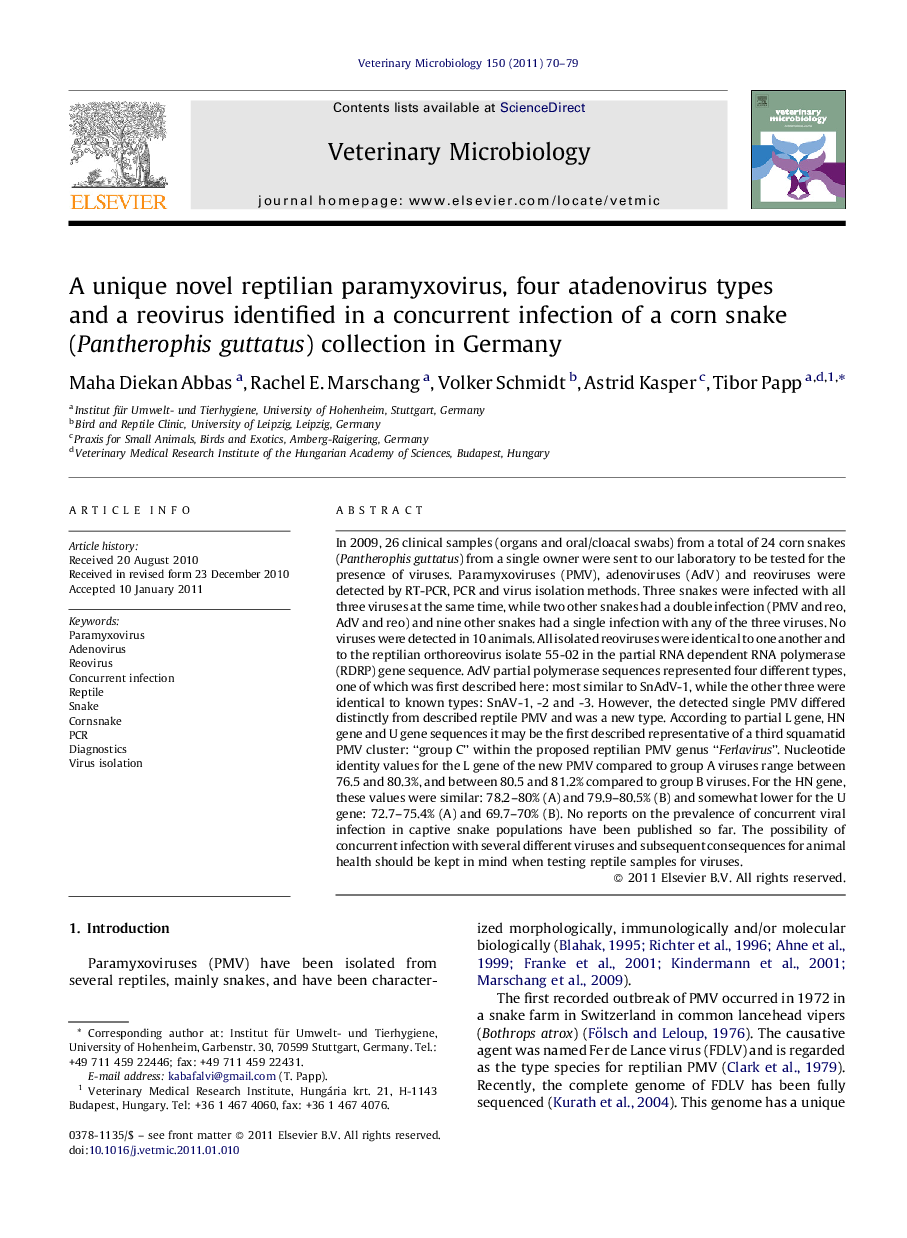| کد مقاله | کد نشریه | سال انتشار | مقاله انگلیسی | نسخه تمام متن |
|---|---|---|---|---|
| 2467637 | 1555401 | 2011 | 10 صفحه PDF | دانلود رایگان |

In 2009, 26 clinical samples (organs and oral/cloacal swabs) from a total of 24 corn snakes (Pantherophis guttatus) from a single owner were sent to our laboratory to be tested for the presence of viruses. Paramyxoviruses (PMV), adenoviruses (AdV) and reoviruses were detected by RT-PCR, PCR and virus isolation methods. Three snakes were infected with all three viruses at the same time, while two other snakes had a double infection (PMV and reo, AdV and reo) and nine other snakes had a single infection with any of the three viruses. No viruses were detected in 10 animals. All isolated reoviruses were identical to one another and to the reptilian orthoreovirus isolate 55-02 in the partial RNA dependent RNA polymerase (RDRP) gene sequence. AdV partial polymerase sequences represented four different types, one of which was first described here: most similar to SnAdV-1, while the other three were identical to known types: SnAV-1, -2 and -3. However, the detected single PMV differed distinctly from described reptile PMV and was a new type. According to partial L gene, HN gene and U gene sequences it may be the first described representative of a third squamatid PMV cluster: “group C” within the proposed reptilian PMV genus “Ferlavirus”. Nucleotide identity values for the L gene of the new PMV compared to group A viruses range between 76.5 and 80.3%, and between 80.5 and 81.2% compared to group B viruses. For the HN gene, these values were similar: 78.2–80% (A) and 79.9–80.5% (B) and somewhat lower for the U gene: 72.7–75.4% (A) and 69.7–70% (B). No reports on the prevalence of concurrent viral infection in captive snake populations have been published so far. The possibility of concurrent infection with several different viruses and subsequent consequences for animal health should be kept in mind when testing reptile samples for viruses.
Journal: Veterinary Microbiology - Volume 150, Issues 1–2, 12 May 2011, Pages 70–79